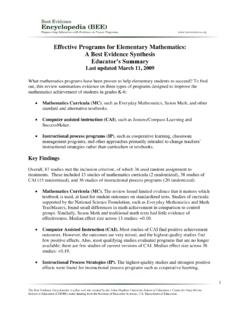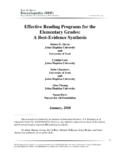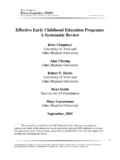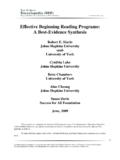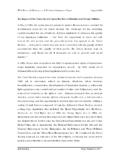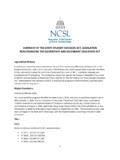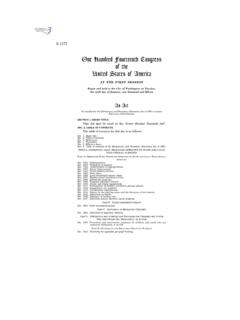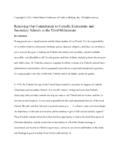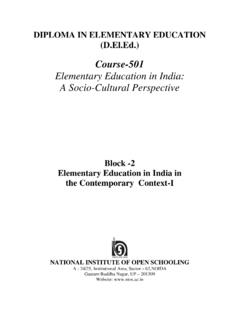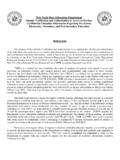Transcription of Effective Programs in Elementary Mathematics
1 The Best Evidence Encyclopedia is a free web site created by the Johns Hopkins University School of education s Center for Data-Driven Reform in education (CDDRE) under funding from the Institute of education Sciences, Department of education . 1 Effective Programs in Elementary Mathematics : A Best-Evidence Synthesis Robert E. Slavin Cynthia Lake Johns Hopkins University -VERSION February, 2007 _____ This paper was written under funding from the Institute of education Sciences, Department of education (Grant No. R305A040082).
2 However, any opinions expressed are those of the authors and do not necessarily represent Department of education positions or policies. We thank Alan Cheung for assistance with computation of effect sizes, and Harris Cooper, Robert Boruch, Henry Becker, Philip Abrami, and Larry Suter for comments on earlier drafts. The Best Evidence Encyclopedia is a free web site created by the Johns Hopkins University School of education s Center for Data-Driven Reform in education (CDDRE) under funding from the Institute of education Sciences, Department of education .
3 2 Abstract This article reviews research on the achievement outcomes of three types of approaches to improving Elementary Mathematics : Mathematics curricula, computer-assisted instruction (CAI), and instructional process Programs . Study inclusion requirements included use of a randomized or matched control group, a study duration of 12 weeks, and achievement measures not inherent to the experimental treatment. Eighty-seven studies met these criteria, of which 36 used random assignment to treatments. There was limited evidence supporting differential effects of various Mathematics textbooks.
4 Effects of CAI were moderate. The strongest positive effects were found for instructional process approaches such as forms of cooperative learning, classroom management and motivation Programs , and supplemental tutoring Programs . The review concludes that Programs designed to change daily teaching practices appear to have more promise than those that deal primarily with curriculum or technology alone. Effective Programs Elementary Mathematics The Best Evidence Encyclopedia is a free web site created by the Johns Hopkins University School of education s Center for Data-Driven Reform in education (CDDRE) under funding from the Institute of education Sciences, Department of education .
5 3 The Mathematics achievement of American children is improving, but still has a long way to go. On the National Assessment of education Progress (2005), the math scores of fourth graders have steadily improved since 1990, increasing from 12% proficient or above to 35%. Among eighth graders, the percentage of students scoring proficient or better gained from 15% in 1990 to 20% in 2005. These trends are much in contrast to the trend in reading, which changed only slightly between 1992 and 2005. However, while Mathematics performance has grown substantially for all subgroups, the achievement gap between African American and Hispanic students and their White counterparts remains wide.
6 In 2005, 47% of White fourth graders scored at or above proficient on NAEP, but only 13% of African Americans and 19% of Hispanics scored this well. Further, the remains behind other developed nations in international comparisons of Mathematics achievement. For example, 15-year-olds ranked 28th on the OECD PISA study of Mathematics achievement, significantly behind countries such as Finland, Canada, the Czech Republic, and France. While we can celebrate the growth of America s children in Mathematics , we cannot be complacent. The achievement gap between children of different ethnicities, and between children and those in other countries, gives us no justification for relaxing our focus on improving Mathematics for all children.
7 Under No Child Left Behind, schools can meet their adequate yearly progress goals only if all subgroups meet state standards (or show adequate growth) in all subjects tested. Nationally, thousands of schools are under increasing sanctions because the school, or one or more subgroups, is not making sufficient progress in math. For this reason, educators are particularly interested in implementing Programs and practices that have been shown to improve the achievement of all children. One way to reduce Mathematics achievement gaps, and to improve achievement overall, is to provide low-performing schools training and materials known to be markedly more Effective than typical Programs .
8 No Child Left Behind, for example, emphasizes the use of research-proven Programs to help schools meet their adequate yearly progress goals. Yet for such a strategy to be Effective , it is essential to know what specific Programs are most likely to improve Mathematics achievement. The purpose of this review is to summarize and interpret the evidence on Elementary Mathematics Programs in hopes of informing policies and practices designed to reduce achievement gaps and improve the Mathematics achievement of all children. Reviews of Effective Programs in Elementary Mathematics Throughout the No Child Left Behind Act, there is a strong emphasis on encouraging schools to use federal funding (such as Title I) on Programs with strong evidence of effectiveness from scientifically-based research.
9 NCLB defines scientifically-based research as research that uses experimental methods to compare Programs to control groups, preferably with random assignment to conditions. Yet in Mathematics , what Programs meet this standard? There has never been a published review of scientific research on all types of Effective Programs . There have been meta-analyses on outcomes of particular approaches to Mathematics education , such as use of educational technology ( , Becker, 1991; Chambers, 2003; Kulik, 2003; Murphy, Effective Programs Elementary Mathematics The Best Evidence Encyclopedia is a free web site created by the Johns Hopkins University School of education s Center for Data-Driven Reform in education (CDDRE) under funding from the Institute of education Sciences, Department of education .)
10 4 Penuel, Means, Rorbak, Whaley, & Allen, 2002), calculators ( , Ellington, 2003), and math approaches for at-risk children ( , Baker, Gersten, & Lee, 2002; Kroesbergen & Van Luit, 2003). There have been reviews of the degree to which various math Programs correspond to current conceptions of curriculum, such as those carried out by Project 2061 evaluating middle school math textbooks (AAAS, 2000). The What Works Clearinghouse (2006) is doing a review of research on effects of alternative math textbooks, but this has not yet appeared as of this writing.
